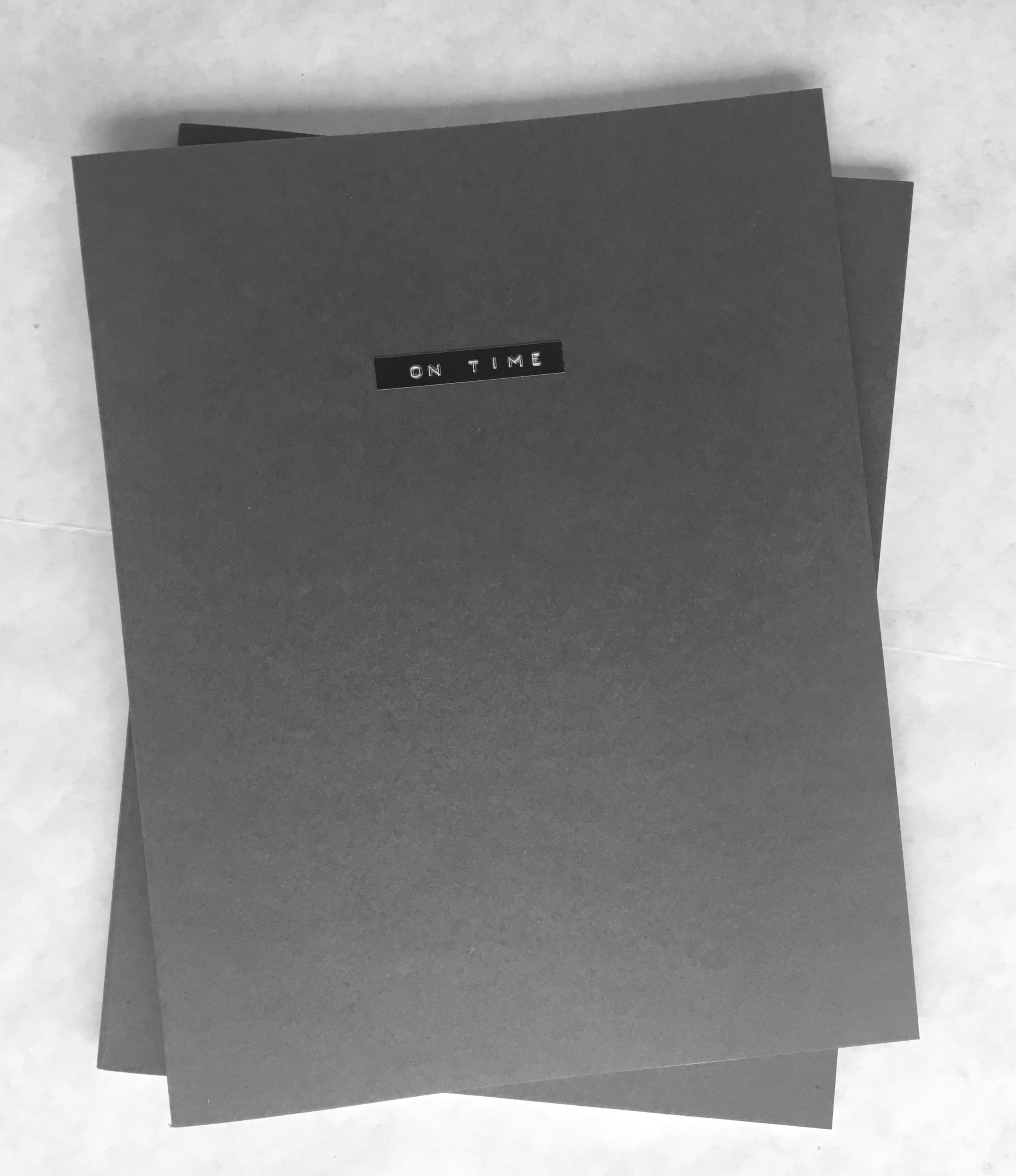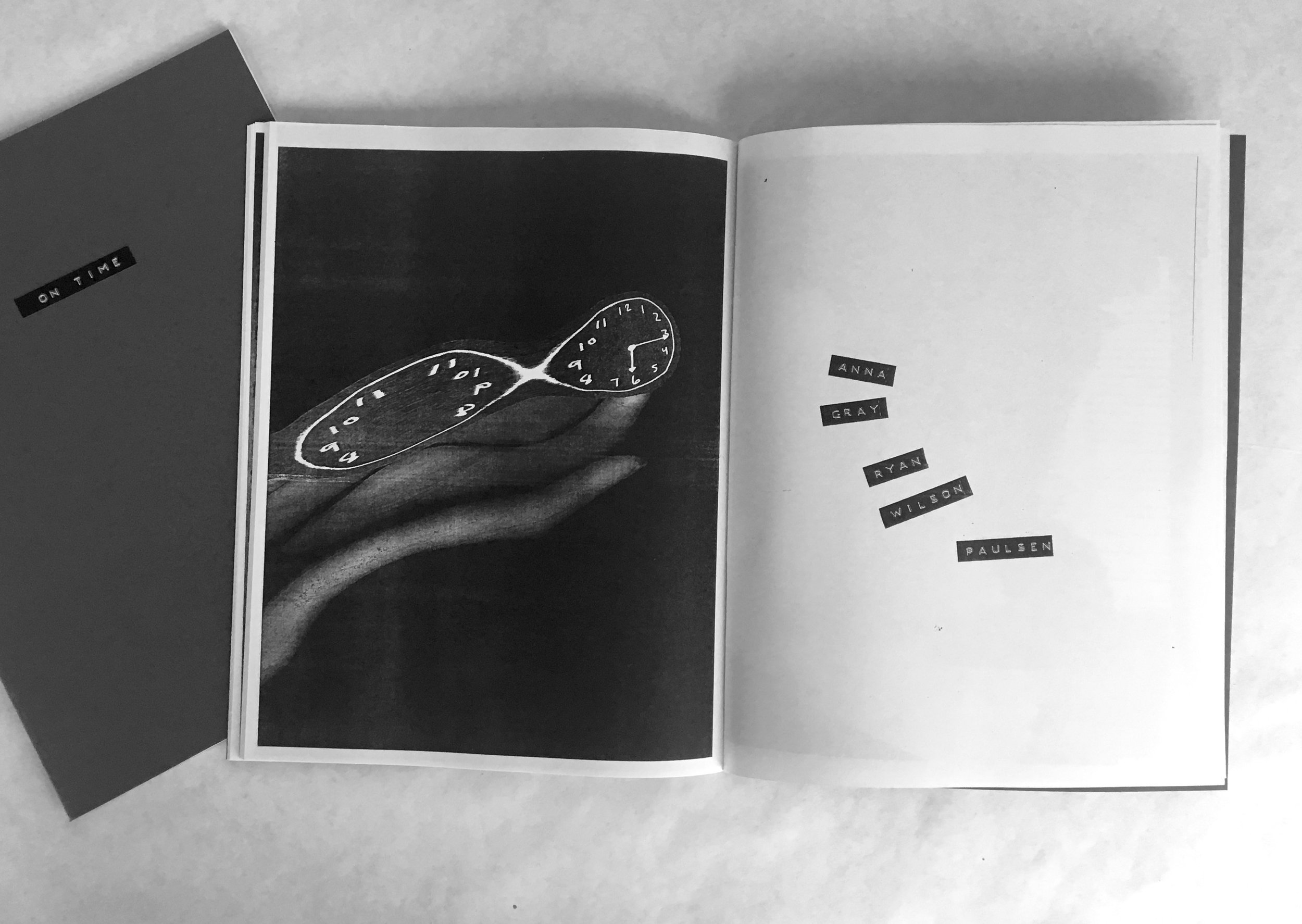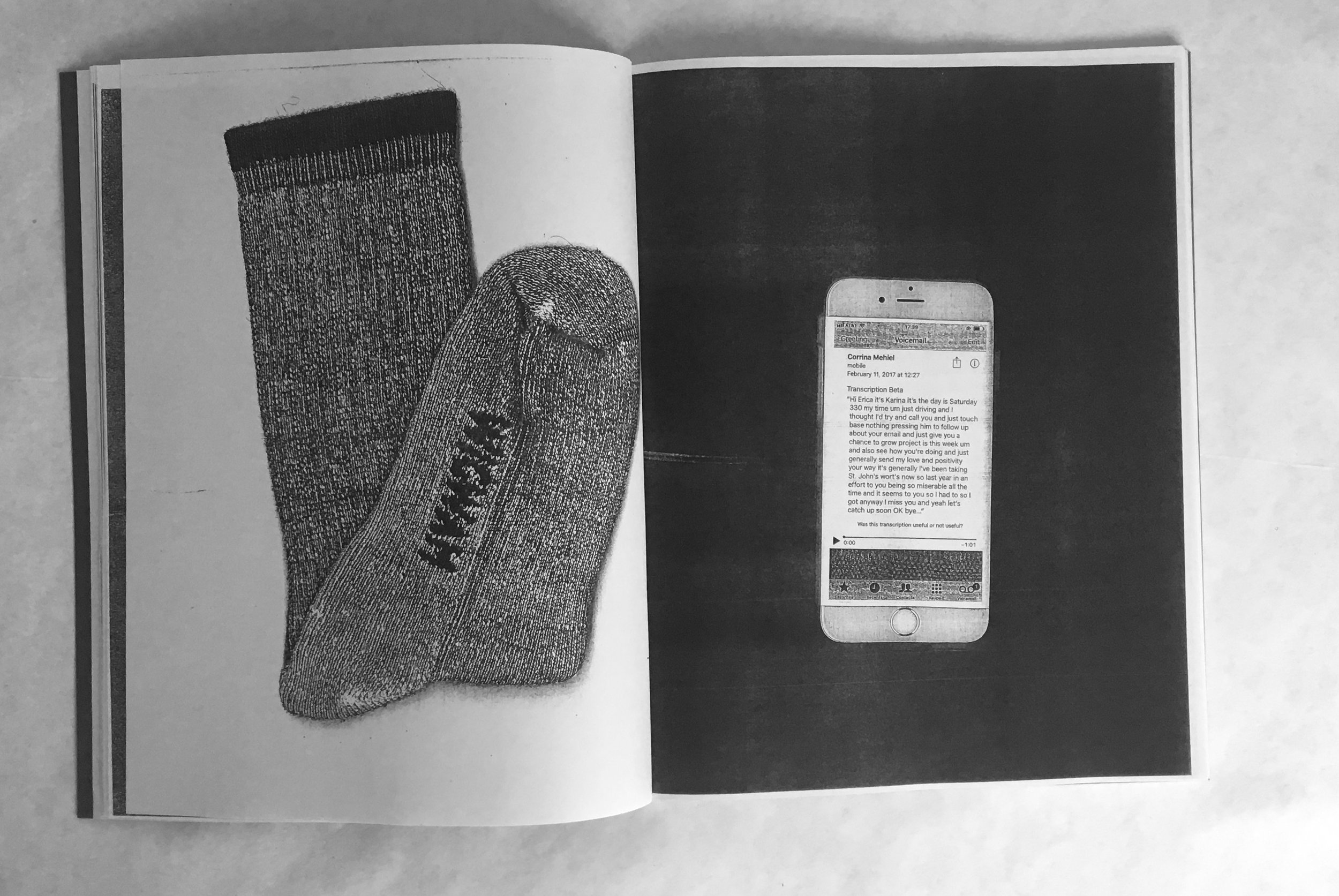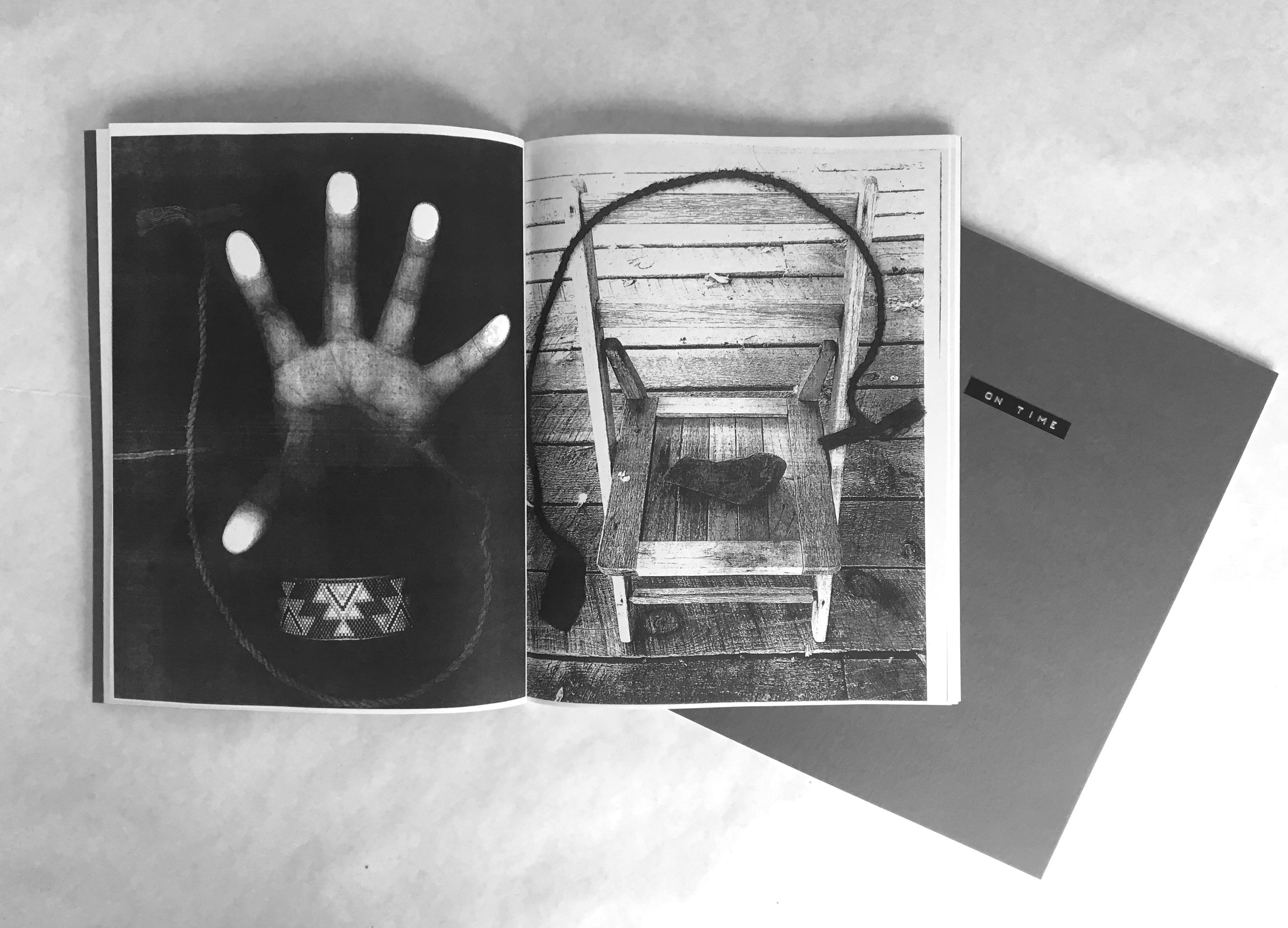On Time
On Time is a publication created by 12 women and non-binary artists responding to a challenge: make a book considering the concept of "time," using only a photocopier.
The Xerox Book of 1968 was an exhibition in the form of a book, created by a group of male artists gazing at a new technology. The original book was made quickly using a Xerox machine to expose the process, but then, due to high cost of use at the time, was reproduced using offset printing.
Unlike the original, this now-dated technology freed the contributors to OnTime to embrace the ephemeral and give in to the limitations of the materials.
This project was conceived of and produced in collaboration with Sarah Farahat, and produced in part through the facilities of my studio, Works progress Agency. I also contributed to the book as an artist. More information about my contribution, AN INCOMPLETE ARCHIVE OF CORRINA MEHIEL MARCH 23, 1982—MARCH 21, 2017 can be seen below.
RELEASE DATE 12/12/17. Images of finished publication forthcoming.
Corrina Mehiel was a friend and colleague. My relationship with her began because of our mutual connection with art, social practice, and activist feminism. You can read more about her work on her website, linked with her name. In January of 2017, I flew to Washington D.C., at her insistence, to attend the national Women's March. We stayed at the temporary apartment of Mel Chin and Helen Nagge, with whom she had been working. Somehow over the course of that weekend one of her thick hiking socks ended up in my bag. I didn't realize at the time, so after my return to Portland, for weeks after I racked by brain as to whose tiny but sturdy sock, much too small for me, had ended up at my house. So, I set it atop my dresser waiting for the realization of its owner. When I got the call from my father in late March telling me that something terrible had happened to her, a wave of nausea came over me and I suddenly realized that it was hers. And that I was holding a most intimate piece of her. It felt especially fitting considering her extensive work with clothing, body and care. I chose to include a photocopy of her sock, an image of a poorly transcribed final voicemail I received from her, and an unsent letter sent by her close friend via cell phone picture. These imperfect graspings for pieces of her, transmitted and translated, with noise and signal loss, seemed a fitting description of the trouble with memory, time, and grief.
More information about Corrina's death can be found at the US Justice Dep. website.





